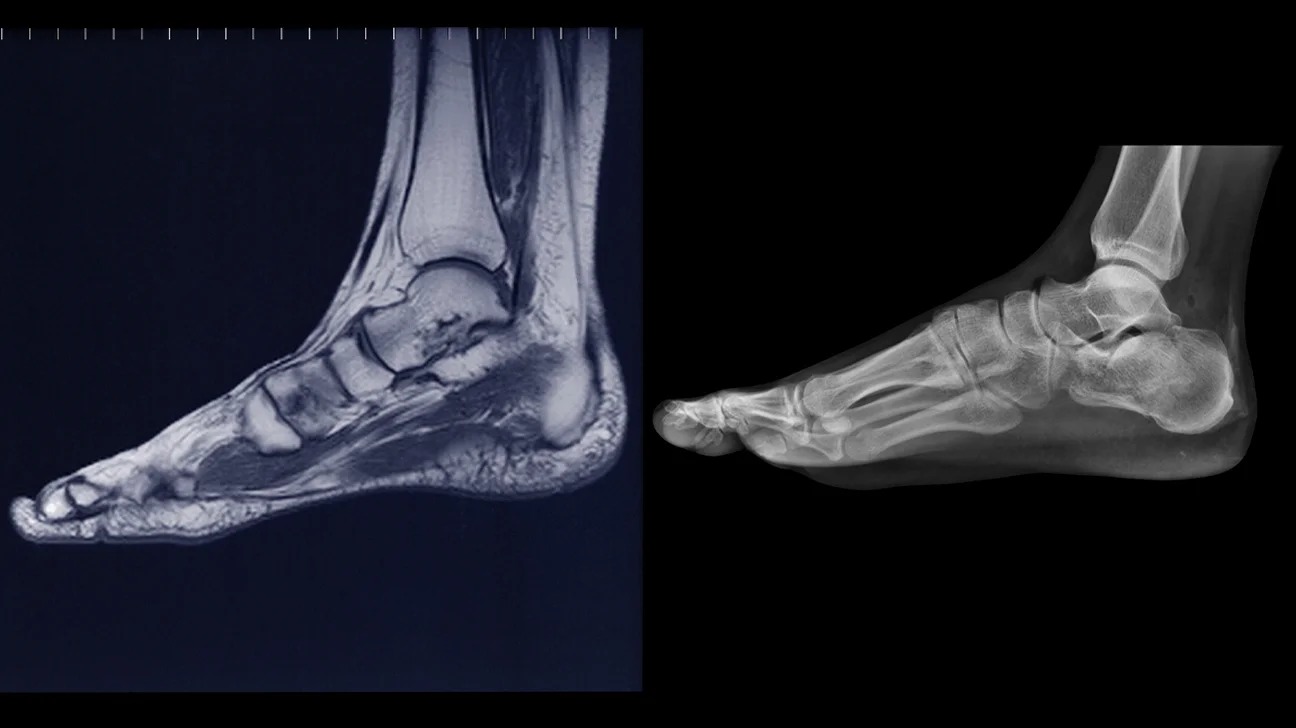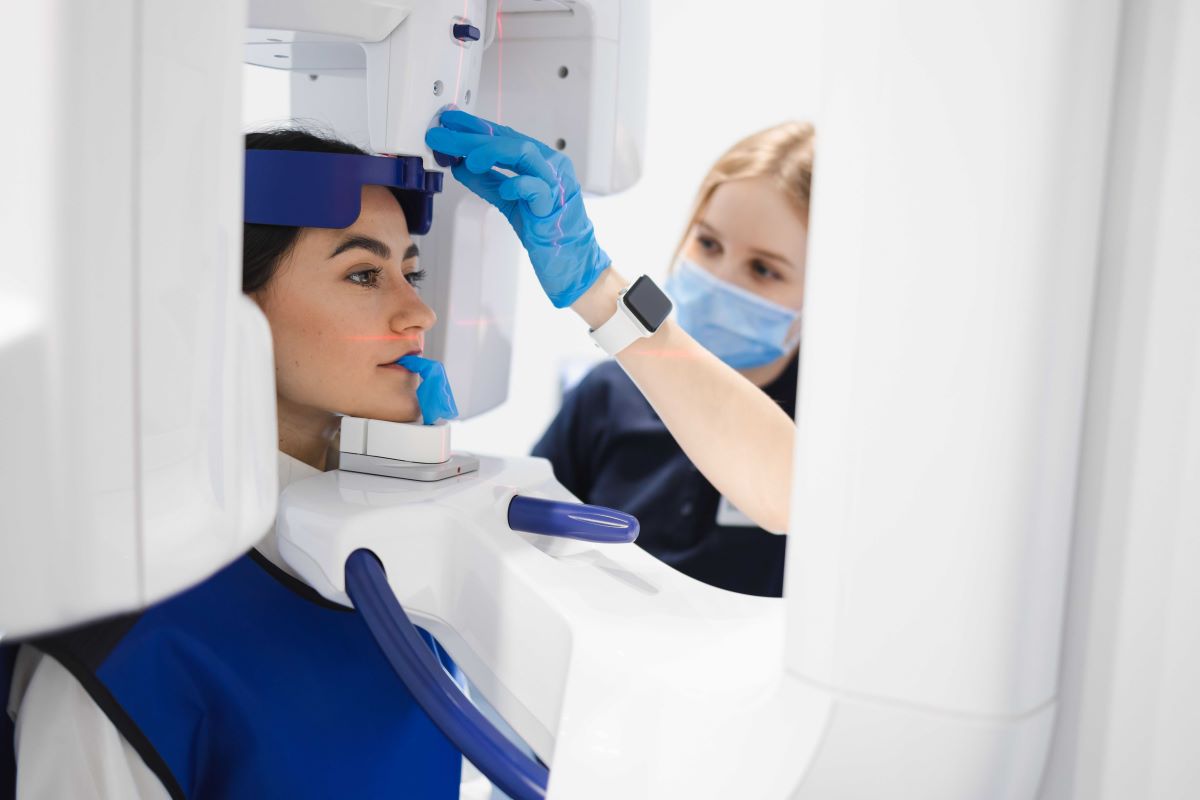Home>Finance>How Much Is An X-Ray At Urgent Care With Insurance?


Finance
How Much Is An X-Ray At Urgent Care With Insurance?
Published: November 10, 2023
Find out the cost of an X-ray at urgent care with insurance. Manage your finances wisely and get the medical care you need without breaking the bank.
(Many of the links in this article redirect to a specific reviewed product. Your purchase of these products through affiliate links helps to generate commission for LiveWell, at no extra cost. Learn more)
Table of Contents
- Introduction
- Understanding Urgent Care
- The Importance of X-Rays in Urgent Care
- How Insurance Coverage Works for X-Rays at Urgent Care
- Factors Affecting the Cost of X-Rays at Urgent Care with Insurance
- Average Cost of X-Rays at Urgent Care with Insurance
- Tips for Minimizing Costs of X-Rays at Urgent Care with Insurance
- Conclusion
Introduction
Welcome to the world of urgent care and the world of insurance. When unexpected health issues arise, urgent care centers have become a popular option for quick and convenient medical attention. Whether you’ve sprained your ankle, come down with the flu, or have a nagging cough, urgent care clinics offer a range of services to diagnose and treat your ailments.
One essential service offered at urgent care centers is X-rays. X-rays provide valuable diagnostic information to healthcare providers, allowing them to assess and diagnose various conditions or injuries. Whether you need an X-ray to determine if you’ve fractured a bone or to investigate the cause of persistent pain, urgent care centers can provide these services on-site in a timely manner.
However, the cost of medical procedures, including X-rays, can be a concern for many. That’s where insurance comes into play. Health insurance coverage can help alleviate some of the financial burden associated with X-rays at urgent care centers. Understanding how insurance coverage works for X-rays at urgent care is crucial in making informed decisions about your healthcare and financial well-being.
In this article, we will explore the nitty-gritty details of X-rays at urgent care with insurance coverage. We will dive into the factors that affect the cost, provide an average cost range, and offer tips for minimizing expenses. By the end, you will have a comprehensive understanding of how much you can expect to pay for X-rays at urgent care with insurance.
Understanding Urgent Care
Before delving into the costs of X-rays at urgent care centers with insurance, it’s important to have a clear understanding of what urgent care is. Urgent care centers are medical facilities designed to provide immediate treatment for non-life-threatening illnesses and injuries. They bridge the gap between primary care physicians and emergency rooms, offering a convenient option for when your regular doctor is unavailable or when waiting for an ER visit is not feasible.
Urgent care centers typically have extended hours and are open seven days a week, making them accessible to individuals with busy schedules or those in need of immediate medical attention outside of regular office hours. They are equipped to handle a wide range of medical issues, including minor injuries, infections, allergies, respiratory illnesses, and more.
These centers are staffed by qualified healthcare professionals, including physicians, physician assistants, and nurses, who are trained to provide prompt and efficient medical care. They often have lab facilities and radiology services on-site, allowing for quick diagnostic tests like X-rays.
One of the significant benefits of choosing urgent care is the reduced waiting times compared to emergency rooms. While emergency rooms prioritize life-threatening conditions, urgent care centers operate on a first-come, first-served basis. This means if you have a non-emergency issue that requires medical attention, you can expect to be seen relatively quickly.
Urgent care centers are an essential part of the healthcare system, playing a vital role in providing accessible and timely medical care to individuals in need. Now that you have a better understanding of what urgent care entails, let’s delve into the importance of X-rays in urgent care.
The Importance of X-Rays in Urgent Care
X-rays are a critical tool in the field of medicine, and their importance is no different in the setting of urgent care. These imaging studies use electromagnetic radiation to create detailed images of the inside of the body, helping healthcare providers make accurate diagnoses and develop appropriate treatment plans.
Urgent care centers utilize X-rays to evaluate a variety of conditions and injuries. They are particularly valuable in diagnosing musculoskeletal injuries, such as fractures, dislocations, and sprains. X-rays can also be used to identify lung infections, evaluate the severity of pneumonia, and detect foreign bodies in the body.
One of the main advantages of using X-rays in urgent care is their efficiency. Urgent care clinics are designed to provide quick and convenient medical care. By having X-ray capabilities on-site, healthcare providers can evaluate injuries and conditions promptly, often within the same visit. This allows for faster diagnosis and the ability to initiate appropriate treatment without the need for referrals or additional appointments.
Another key benefit of X-rays in urgent care is their non-invasive nature. Unlike other imaging techniques, such as CT scans or MRIs, X-rays involve minimal discomfort and no injections or contrast agents. This makes them ideal for immediate evaluation of injuries and conditions in urgent care settings.
By obtaining X-ray images in urgent care, healthcare providers can make more informed decisions regarding patient care. These images provide a visual representation of the anatomical structures, helping to identify any abnormalities or areas of concern. This can lead to more accurate diagnoses, allowing for appropriate treatment plans to be implemented promptly.
Overall, X-rays play a vital role in urgent care by aiding in the diagnostic process and assisting healthcare providers in making timely decisions. They allow for efficient evaluation, prompt treatment, and a more streamlined healthcare experience for patients seeking urgent care services.
How Insurance Coverage Works for X-Rays at Urgent Care
Understanding how insurance coverage works for X-rays at urgent care is essential in managing your healthcare expenses. Health insurance policies vary in terms of coverage and cost-sharing, so it’s crucial to familiarize yourself with the specifics of your plan.
Generally, if you have health insurance, your policy will typically provide coverage for X-rays at urgent care centers. However, it’s important to note that coverage may differ depending on whether you visit an in-network or out-of-network facility.
When you visit an in-network urgent care center, it means the facility has a contracted agreement with your insurance company. In-network providers have agreed upon reimbursement rates, which are typically lower than their standard rates. As a result, your out-of-pocket costs for X-rays at an in-network facility are typically lower compared to visiting an out-of-network provider.
When visiting an out-of-network urgent care center, your insurance coverage may still apply, but you may be responsible for a higher percentage of the cost. It’s important to review your insurance policy or contact your insurance provider to understand the specific coverage and potential out-of-pocket expenses associated with visiting an out-of-network facility.
Insurance coverage for X-rays at urgent care centers typically falls under the umbrella of diagnostic imaging services. Depending on your insurance policy, you may be subject to certain cost-sharing requirements, such as a copayment or coinsurance.
A copayment is a fixed amount you are responsible for paying at the time of your visit. For example, your insurance policy may specify a $30 copayment for X-rays at urgent care. This means you would pay $30 out of pocket, and your insurance would cover the remaining cost.
Coinsurance, on the other hand, is a percentage of the total cost that you are responsible for paying. For instance, if your insurance policy has a 20% coinsurance requirement for X-rays, you would be responsible for paying 20% of the total cost, while your insurance would cover the remaining 80%.
It’s important to keep in mind that insurance coverage for X-rays at urgent care may be subject to your deductible. Your deductible is the amount you must pay out of pocket before your insurance coverage kicks in. Once you meet your deductible, your insurance will begin to cover a portion or all of the cost of the X-rays, depending on your policy.
To ensure you understand your insurance coverage for X-rays at urgent care, it’s recommended to review your policy documents or contact your insurance provider directly. They can provide specific details about your coverage, out-of-pocket expenses, and any pre-authorization requirements that may be necessary before obtaining X-rays.
By understanding how insurance coverage works for X-rays at urgent care, you can make informed decisions about seeking medical care and managing your financial responsibility.
Factors Affecting the Cost of X-Rays at Urgent Care with Insurance
Several factors can influence the cost of X-rays at urgent care centers, even with insurance coverage. Understanding these factors can help you anticipate and manage your expenses more effectively.
1. Insurance Plan: The specific insurance plan you have plays a significant role in determining the cost of X-rays at urgent care. Different plans have varying levels of coverage and cost-sharing requirements, such as copayments, coinsurance, and deductibles.
2. In-Network vs. Out-of-Network: Visiting an in-network urgent care center versus an out-of-network facility can affect the cost of X-rays. In-network providers have negotiated rates with insurance companies, resulting in lower out-of-pocket expenses for patients. Out-of-network providers may have higher rates, leading to higher cost-sharing for the patient.
3. Deductible: If you have a health insurance plan with a deductible, you will need to meet this amount before your insurance coverage applies. The cost of X-rays at urgent care will be your responsibility until the deductible is reached.
4. Copayments and Coinsurance: Depending on your insurance policy, you may be responsible for paying a copayment, which is a fixed amount, or coinsurance, which is a percentage of the cost. These cost-sharing requirements can vary and impact the overall expense of X-rays.
5. Pre-Authorization: In some cases, your insurance may require pre-authorization before you can receive X-rays at urgent care. Failure to obtain pre-authorization may result in limited or no coverage, leading to increased out-of-pocket costs.
6. Type and Complexity of X-ray: The type and complexity of the X-ray can influence the cost. Some X-rays require multiple images or specialized techniques, which may result in higher charges.
It’s important to note that while insurance coverage can help mitigate the cost of X-rays at urgent care, there may still be out-of-pocket expenses. These expenses can include deductibles, copayments, coinsurance, or any amount exceeding the coverage provided by your insurance plan.
Additionally, it’s essential to keep in mind that these cost factors can vary widely depending on your specific insurance policy and the urgent care center you visit. It’s always a good idea to contact your insurance provider and the urgent care center in advance to obtain an estimate of the cost and verify your coverage.
By considering these factors and understanding how they can impact the cost of X-rays at urgent care with insurance, you can better prepare financially for your healthcare needs.
Average Cost of X-Rays at Urgent Care with Insurance
The average cost of X-rays at urgent care centers with insurance coverage can vary depending on several factors, including the specific urgent care facility, your insurance plan, and the type of X-ray needed. It’s important to note that these costs are averages and can be subject to fluctuations.
On average, the cost of a basic X-ray at an in-network urgent care center with insurance coverage can range from $50 to $150. This cost typically includes the interpretation of the X-ray by a radiologist or healthcare provider. However, it’s essential to keep in mind that more complex X-rays or specialized imaging techniques may incur higher costs.
It’s important to review your insurance policy for any cost-sharing requirements, such as copayments or coinsurance, as these will contribute to your out-of-pocket expenses. The amount you will pay can vary based on your specific insurance plan.
For example, you may have a policy that requires a $30 copayment for X-rays at urgent care, or you may be responsible for a percentage of the total cost as coinsurance, such as 20%. By knowing your policy details, you can estimate your portion of the cost more accurately.
It’s also worth noting that if you visit an out-of-network urgent care center, your out-of-pocket costs may be higher compared to visiting an in-network provider. Out-of-network providers may charge higher rates, and your insurance coverage may only reimburse a portion of these charges, leaving you responsible for the remainder.
To ensure you have a clear understanding of the average cost of X-rays at urgent care with insurance, it’s recommended to contact your insurance provider directly. They can provide information specific to your policy, including any cost-sharing requirements, deductible information, and coverage limitations.
Furthermore, it’s important to inquire about the list of in-network urgent care centers in your area to ensure you visit a facility that will provide optimal coverage and minimize your out-of-pocket expenses.
By being proactive and knowledgeable about the average cost of X-rays at urgent care with insurance, you can make informed decisions about your healthcare and budget accordingly.
Tips for Minimizing Costs of X-Rays at Urgent Care with Insurance
While X-rays at urgent care centers with insurance coverage can come with associated costs, there are several tips you can follow to help minimize these expenses:
1. Choose an In-Network Provider: Selecting an urgent care facility that is in-network with your insurance plan can significantly reduce your out-of-pocket costs. In-network providers have agreed-upon rates with your insurance company, leading to lower charges for services rendered.
2. Understand Your Insurance Coverage: Take the time to review your insurance policy and understand the specific coverage details for X-rays at urgent care. Familiarize yourself with any cost-sharing requirements, such as copayments or coinsurance, as well as any pre-authorization requirements. This knowledge will help you anticipate and budget for potential expenses.
3. Visit Urgent Care Instead of the Emergency Room: If your situation permits and it is not a life-threatening emergency, consider visiting an urgent care center instead of an emergency room. Urgent care centers often have lower costs compared to emergency rooms, and your insurance coverage for X-rays at urgent care is typically more favorable.
4. Discuss Costs and Payment Options: Before receiving X-rays at an urgent care facility, ask about the anticipated cost and discuss payment options. Some centers may offer prompt-pay discounts or payment plans that can help alleviate your financial burden. It never hurts to inquire and explore different payment options.
5. Utilize Preventive Care Services: Some insurance plans offer preventive care services, including certain types of X-rays, at no cost to you. Ensure that you take advantage of these services, as they can help detect potential issues early on and prevent more extensive and costly treatments in the future.
6. Review Your Explanation of Benefits (EOB): After receiving X-rays at urgent care, carefully review your Explanation of Benefits (EOB) from your insurance provider. This document will outline the services provided, the amount billed, and the portion covered by your insurance. By reviewing your EOB, you can identify any billing errors and address them promptly.
7. Consider Telemedicine Options: Some insurance plans offer telemedicine options where you can consult with healthcare providers remotely. In certain cases, telemedicine consultations may eliminate the need for in-person visits and subsequent X-rays, reducing overall costs.
8. Communicate with Your Healthcare Provider: Openly discuss your concerns about cost with your healthcare provider. They may be able to provide alternative options or suggest cost-effective strategies that align with your medical needs.
Remember, it is important to consult your insurance provider for specific details and guidance regarding cost-saving measures. By being proactive and informed, you can take steps to minimize the costs associated with X-rays at urgent care while still receiving the necessary medical care.
Conclusion
When it comes to X-rays at urgent care with insurance, understanding the factors involved is crucial for managing your healthcare expenses. Urgent care centers offer a convenient and efficient option for receiving medical attention, and X-rays play a vital role in diagnosing and treating various conditions and injuries.
Insurance coverage for X-rays at urgent care can significantly help alleviate the financial burden, but it’s important to be aware of your plan’s specifics. Factors such as whether the urgent care center is in-network or out-of-network, your deductible, copayments, and coinsurance can all impact the cost you will ultimately bear.
On average, the cost of X-rays at urgent care with insurance coverage can range from $50 to $150, but these costs can vary depending on the specific circumstances and the type of X-ray needed. It’s important to review your insurance policy and contact your insurance provider for accurate estimates and coverage details.
To minimize costs, consider choosing an in-network provider, understanding your insurance coverage, opting for urgent care over emergency room visits when appropriate, discussing costs and payment options in advance, and utilizing preventive care services. Additionally, reviewing your Explanation of Benefits (EOB) and exploring telemedicine options can also help reduce expenses.
By following these tips and being proactive in understanding your insurance and healthcare options, you can better manage the costs associated with X-rays at urgent care. Remember to communicate openly with your healthcare provider and insurance company to ensure you receive the quality care you need while minimizing your financial burden.
Ultimately, X-rays at urgent care with insurance provide a valuable service in the realm of accessible and timely healthcare. By staying informed and proactive, you can navigate the world of urgent care and insurance with confidence, ensuring your health and financial well-being are both taken care of.














